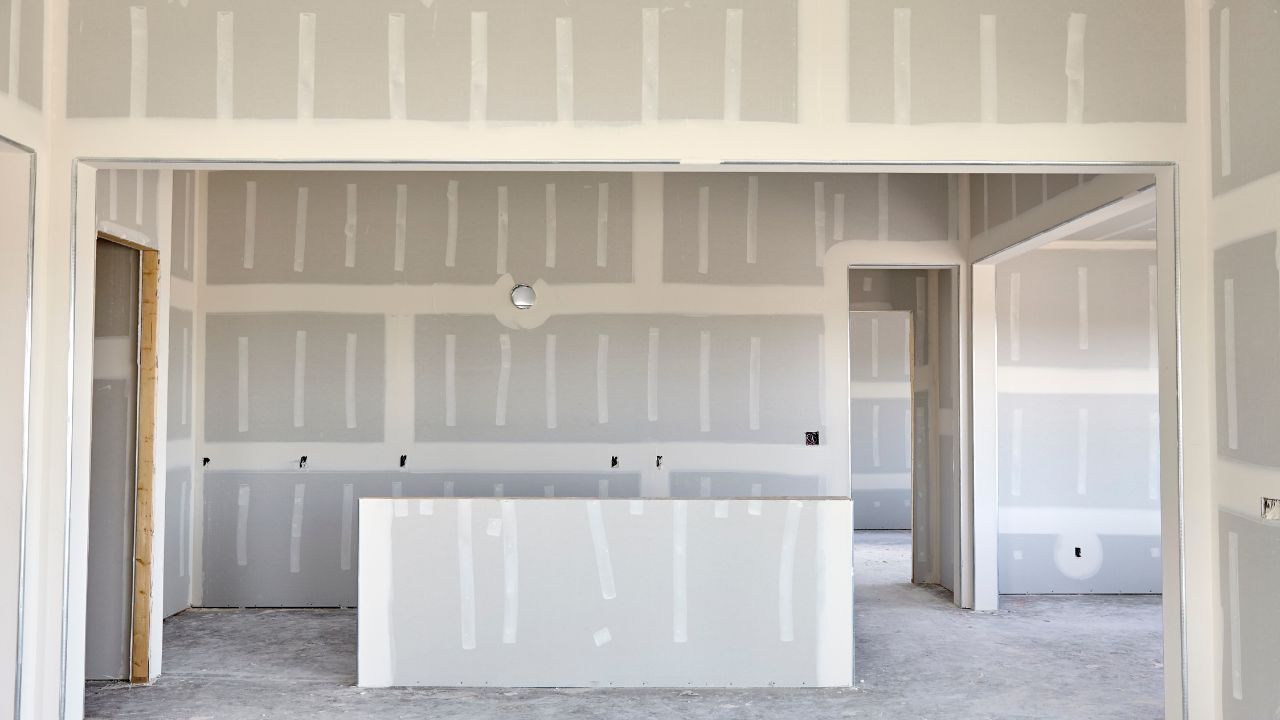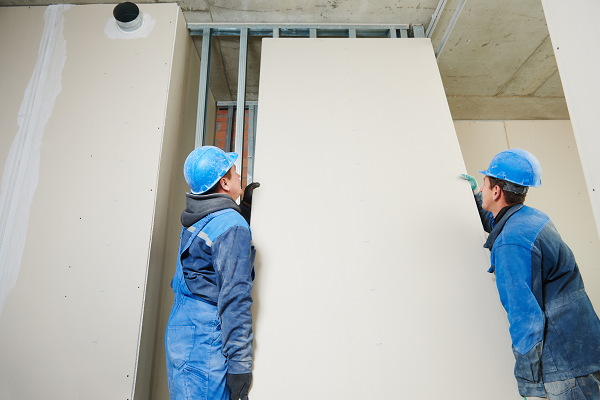Specialist Sheetrock Repair Fort Worth for Quick Fixes
Specialist Sheetrock Repair Fort Worth for Quick Fixes
Blog Article
Drywall Installment Made Easy: Tips for Perfect Outcomes
Drywall installation is usually viewed as a daunting job, yet with the right technique and knowledge, it can become a manageable undertaking. Selecting quality products and preparing the installation area are critical initial steps that establish the structure for success. Understanding strategies for reducing, hanging, and ending up drywall can dramatically affect the end result. As we explore these necessary tips, you may locate that also the smallest adjustments in your approach can bring about extremely enhanced outcomes, leaving you to think about just how these methods can transform your following job.
Picking the Right Products
Choosing the proper products for drywall installation is crucial to achieving a long lasting and aesthetically pleasing coating. drywall contractor. The key part, drywall sheets, normally come in numerous thicknesses, with 1/2-inch sheets being typical for indoor wall surfaces. For locations requiring added moisture resistance, such as restrooms or kitchen areas, take into consideration utilizing green board or cement board, which are particularly developed to hold up against humidity

Additionally, choosing the best fasteners-- either nails or screws-- is vital for securing the drywall to the framework. Drywall screws are normally favored for their holding power and minimized risk of popping. Finally, take into consideration the finishing touches such as guide and paint, which not only enhance the look but also protect the drywall from wetness and wear.
Preparing the Installation Area
Prior to starting the drywall installment procedure, it is vital to prepare the setup area extensively. This prep work entails several critical actions to make certain a smooth and effective project. First, clear the area of any type of furnishings, home appliances, or obstructions that might hinder accessibility. A tidy workspace decreases the risk of damage to existing items and enables effective movement during installment.
Next, evaluate the wall surfaces and ceiling for any type of blemishes, such as fractures, openings, or mold. Address these problems beforehand; patch any type of damages and permit adequate time for repair services to completely dry. In addition, make certain that electric outlets, buttons, and plumbing are appropriately positioned and represented, as this will certainly affect drywall positioning.
Think about the ecological problems as well. A stable temperature and humidity level are crucial for optimal adhesion and performance of the drywall materials. Use a dehumidifier or heater to create appropriate conditions. if needed.
Cutting and Hanging Drywall
The trick to efficient drywall installation lies in the precise cutting and hanging of the panels. Utilize a straight side and an utility blade to rack up the drywall along your measurements, then snap it along the scored line for a tidy break.

Always work from the top down and entrusted to right, ensuring that you maintain a staggered pattern to enhance stability. Properly hanging the drywall sets the foundation for a smooth coating, inevitably resulting in premium lead to your drywall job.
Insulation and Mudding Strategies
While correct cutting and dangling of drywall sets the stage, the following critical step includes grasping taping and mudding strategies to make certain a smooth surface. Taping is important for strengthening joints and stopping cracks; it involves embedding tape into the used joint substance (mud) Start with a high quality fiberglass or paper tape, applying the tape over the joint and pressing it into the wet mud using a taping blade, making sure no air bubbles continue to be.
As soon as the tape remains in location, use a thin layer of joint substance over the tape, feathering read review the sides to develop a smooth shift to the drywall surface area. Allow this layer to completely dry entirely before sanding it gently to remove flaws. Repeat this process, using additional coats of mud as essential-- commonly 2 to 3 layers-- while progressively expanding the application area with each layer to attain a smooth appearance.
After the last layer dries, site sand the surface area with a fine-grit sandpaper until smooth. drywall installation. Bear in mind to put on a mask throughout sanding to stay clear of breathing in dirt bits. Grasping these taping and mudding techniques is essential for attaining a professional-quality surface in your drywall setup
Ending Up Touches for Excellence
Accomplishing a perfect drywall installment surpasses taping and mudding; it culminates in the completing touches that boost the general appearance. These final steps are vital in making certain a professional-grade coating that enhances the visual appeals of your space.
Begin by sanding the dried out joint compound to develop a smooth surface. Utilize a fine-grit sandpaper and a sanding block or pole sander for optimal control. Pay specific interest to corners and sides, as these areas have a tendency to call for even more thorough work. After fining sand, clean down the wall surfaces with a wet fabric to remove any dust particles, making certain a clean surface for painting.
Next, use a guide especially created for drywall. This step is important, as it aids secure the joint compound and gives a consistent base for the topcoat. As soon as the guide dries, check for any kind of blemishes, and touch up as required.
Conclusion
In final thought, effective drywall setup depends upon the cautious choice of products, complete prep work of the setup area, and precise implementation of reducing and hanging strategies. Proficiency of taping and mudding procedures is crucial for accomplishing a smooth finish. Additionally, attention to ending up touches, consisting of priming and touch-ups, makes certain a professional-grade outcome. By sticking to these guidelines, the high quality of craftsmanship can be substantially boosted, adding to the general aesthetic and capability of the space.
Drywall installment is frequently viewed as an overwhelming job, yet with the appropriate technique and understanding, it can end up being a workable undertaking.Picking the appropriate materials for drywall installation is crucial to achieving a durable and visually pleasing coating.Before beginning the drywall installment process, it is vital to prepare the installation area completely. Understanding these taping and mudding techniques is important for achieving a professional-quality finish in your drywall setup.
In verdict, successful drywall installment hinges on the cautious selection of materials, extensive prep work of the installation area, and exact implementation of reducing and hanging techniques.
Report this page